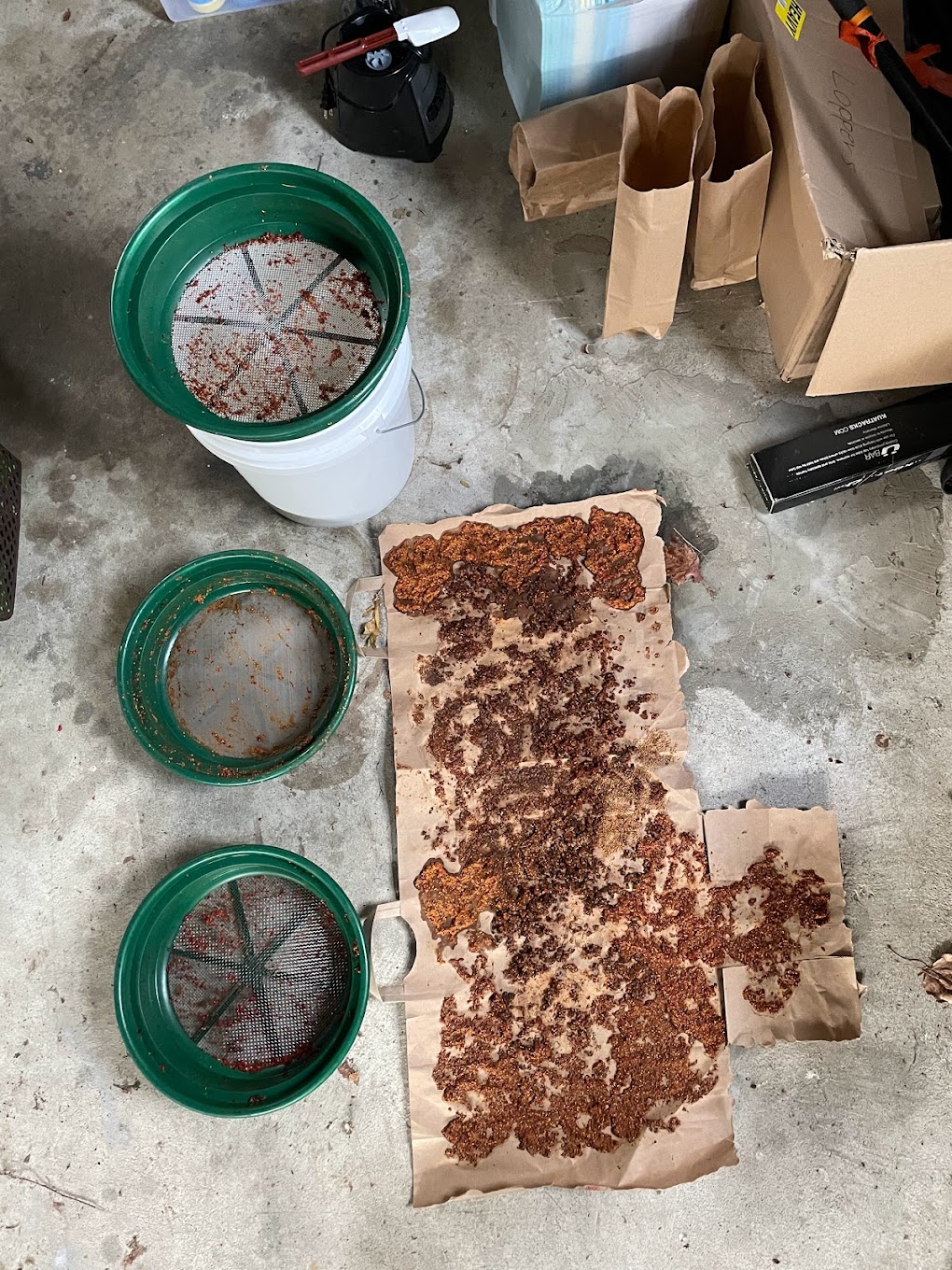As the fall has become colder, and we get closer to winter, the field work continues to prevail while we collect and process seed. Being from Arizona, collecting seed outside in cold, windy, and sometimes rainy weather continues to push my boundaries and show me that I am capable of more than I thought. I have always been used to tolerating the heat but the cold is another story. So as we continue to go out into the field to collect seed all across the Monongahela Forest, I have quickly been learning the best ways to stay warm.

On my last blog post, I stated that I was excited to learn all new ways to collect different species than I have before and now I am learning new ways to process and clean the seed! To start, the seed I have been processing the most is Mountain Ash. Mountain Ash seeds consist of clumps of small red berries that are pruned off of the branches. To process them I start by separating the stems and the berries by throwing away the stems and putting the berries in a medium size sieve. Once I have a decent amount of berries in the sieve, I smush them through the holes in the sieve to separate the seeds from the skin and pulp of the berries. After smashing many berries, I rinse the sieve into a bucket to gather the rest of the seeds and then strain out the water. Once the seeds are cleaned I lay them out on a paper bag for them to dry. The dry seed will then be placed in a bag and labeled. Not all seed processing is done this way because of the wide variety of ways plants have evolved to disperse their seeds. This is interesting to me because of all the different and unique ways that can be used to process seeds depending on the plant. I look forward to learning new and unique ways to process seed in the coming weeks!

Not only is it interesting how all the seed collection and processing happens but also why it is important to collect seed from around the forest. Collecting seed on the forest is important for a couple different reasons. One reason is to use the seeds to plant on different forest restoration sites. This is achieved by collecting seeds from a variety of species, processing these seeds, and then sending the cleaned seed to a plant nursery. Once the nursery is done growing the seed, the plants will be sent back to the forest so they can be planted on the current restoration sites. The second reason we collect seed is to increase the genetic diversity of the plant species around the forest. The restoration sites on the forest consists of both plants that have been bough from nurseries in the surrounding states and from the nurseries that planted the seeds collected on the Monongahela forest. By planting native species from different places, the genetic diversity of the forest will increase. This greater diversity will hopefully allow the restoration sites have an increased chance of survival and success.
